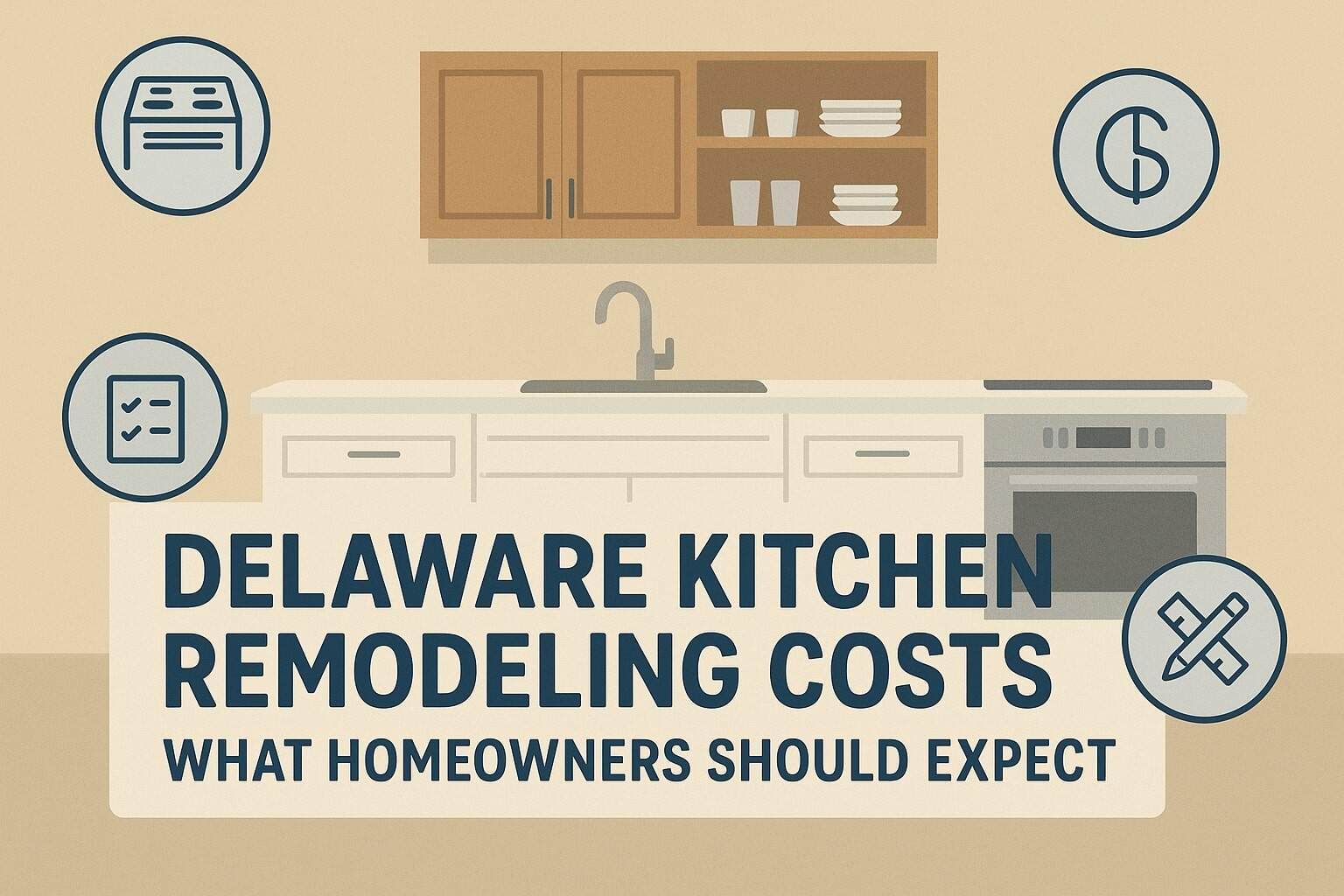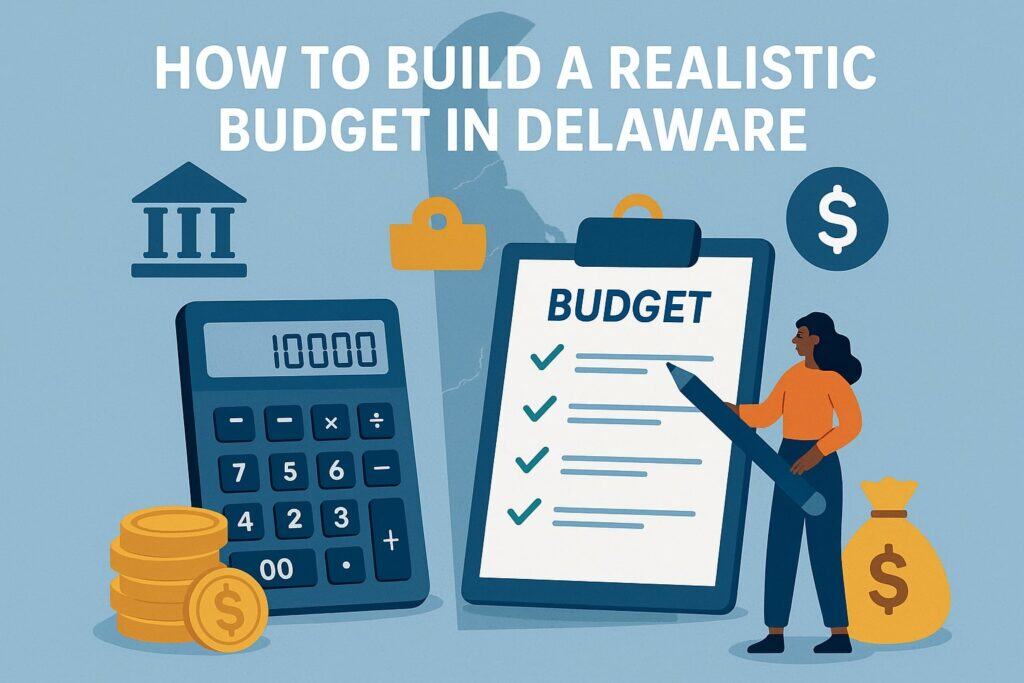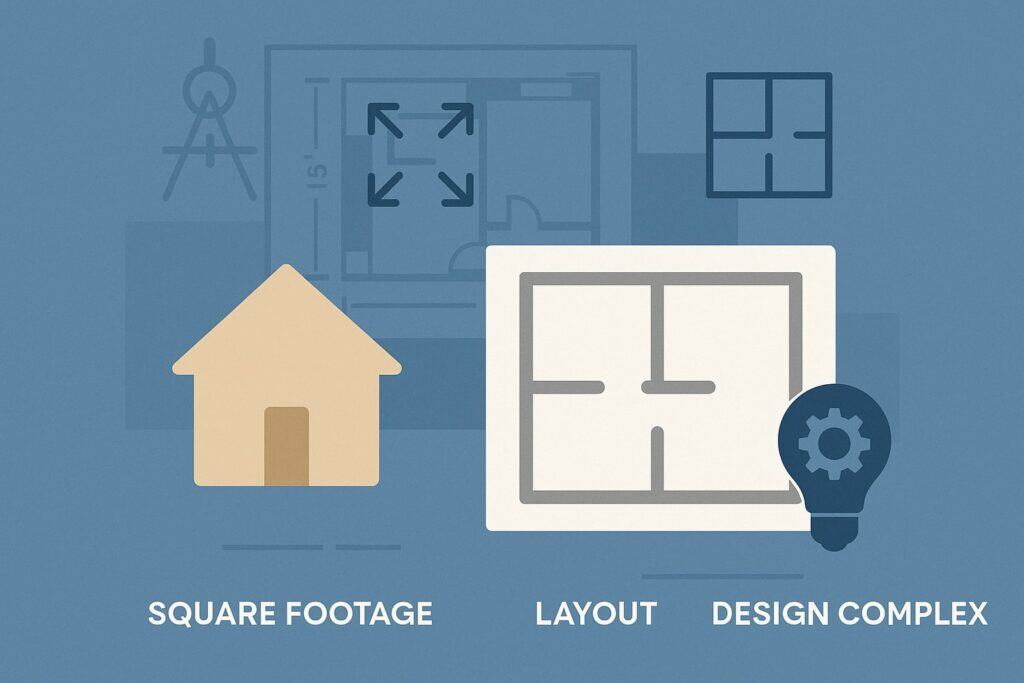
By 302renovations November 4, 2025
Delaware kitchen remodeling costs can vary widely, but homeowners can plan smartly with the right guidance. In the First State, kitchens are high-ROI spaces that influence daily comfort and resale value. Because Delaware has no sales tax, material purchasing can be more predictable than in many nearby states, yet labor, permitting, and coastal resilience still shape final pricing.
In this guide, we unpack realistic ranges for minor refreshes and full gut renovations, explain how square footage, finish levels, and mechanical work affect your budget, and point out regional nuances from Wilmington to the beaches.
You’ll learn how to scope your project, compare bids, schedule work to avoid delays, and protect your investment from moisture, salt-air corrosion, and older-home surprises. Throughout, we keep our language clear and the paragraphs easy to read so you can quickly estimate Delaware kitchen remodeling costs, set priorities, and move forward with confidence.
How to Build a Realistic Budget in Delaware

A kitchen budget in Delaware starts with scope. Are you doing a cosmetic refresh or a full reconfiguration with new plumbing runs and panel upgrades? Delaware kitchen remodeling costs expand with every change behind the walls.
Cabinet grade, countertop material, appliance package, and lighting design add layers. Labor rates in New Castle County may run a bit higher than in parts of Kent and Sussex, and coastal projects can include corrosion-resistant hardware, dehumidification, and flood-aware detailing.
Create a line-item list: design, demo, framing, MEP (mechanical, electrical, plumbing), cabinets, counters, tile, flooring, paint, appliances, lighting, trim, permits, and contingency. A 15–20% contingency is wise for older Wilmington rowhomes and Rehoboth cottages where plaster, joists, or subfloors may need repair.
Take advantage of Delaware’s no-sales-tax environment by purchasing big-ticket finishes locally when possible, but still compare lead times.
Finally, segment “must-haves” and “nice-to-haves.” When bids arrive, you can value-engineer without compromising safety or code. The clearer your scope, the more accurate your Delaware kitchen remodeling costs will be.
Cost Ranges by Project Type
Delaware kitchen remodeling costs cluster into three tiers. A surface refresh—paint, hardware, a faucet swap, lighting updates, and perhaps a budget countertop—often fits in a modest five-figure range for small to mid-size rooms, especially if cabinets are sound.
A pull-and-replace keeps the layout but replaces cabinets, counters, appliances, and finishes. This mid-tier is the sweet spot for many Delaware homes, balancing improved function and resale appeal.
A full redesign with new layout, structural adjustments, wider openings, and full MEP rework is the most expensive but yields the biggest functional leap.
Costs climb quickly when adding an island with plumbing, relocating gas lines, or upgrading an undersized electrical service to handle induction cooktops and dedicated appliance circuits. Beach-area projects sometimes include upgraded ventilation and materials that tolerate humidity and sand traffic.
While every house is unique, homeowners can expect Delaware kitchen remodeling costs to rise with scope, mechanical changes, custom millwork, and stone or porcelain slab selections. Thoughtful planning keeps each tier aligned with your goals and your property’s value.
Square Footage, Layout, and Design Complexity

The footprint of your kitchen sets a baseline for Delaware kitchen remodeling costs, but complexity drives the variance. A compact galley with standard-depth runs uses fewer linear feet of cabinets and counters than an L-shaped plan with a peninsula.
Curved islands, multi-level bars, floating shelves, and integrated pantries add fabrication time. If you’re opening a wall to create an open plan in a Wilmington rowhome, budget for structural engineering and a properly sized LVL beam.
In older houses, plaster repairs and floor height transitions between kitchen and adjacent rooms can surprise you. Designers help rationalize storage, traffic flow, and sightlines so you invest where it counts.
Ask your designer to produce elevations and a cabinet schedule that specify box types, drawer counts, pullouts, and end panels. The more detail on paper, the fewer change orders later.
Ultimately, the right layout can let you spend less on square footage while improving daily use, protecting your target Delaware kitchen remodeling costs without sacrificing performance.
Cabinets: Stock, Semi-Custom, and Fully Custom
Cabinetry often consumes the largest share of Delaware kitchen remodeling costs. Stock cabinets are quick, budget-friendly, and come in fixed sizes. They suit rental units, modest updates, and accessory kitchens.
Semi-custom expands options: wider door styles, better finishes, plywood boxes, and clever inserts like trash pullouts and tray dividers. It’s the sweet spot for many Delaware homeowners seeking quality and value.
Fully custom delivers exact sizing to fit tricky alcoves in historic homes, furniture-style islands, and specialty woods. Expect longer lead times and premium pricing. Construction details matter: plywood versus particleboard, full-height backs, soft-close hardware, and adjustable legs for leveling on wavy floors.
Painted finishes look crisp but need careful handling during install; stained woods hide dings better in busy, sandy, beach-adjacent households. Don’t forget the “invisible” costs: crown, light rail, end panels, fillers, scribe, and matching toe kicks.
Request a cabinet shop drawing set and a door sample before ordering. In short, cabinet choices can swing Delaware kitchen remodeling costs more than any other finish decision, so align durability, style, and budget from the start.
Countertops, Backsplashes, and Sinks
Counter surfaces are daily workhorses that also anchor style. Quartz is popular for its consistency and low maintenance, with price tiers based on brand and pattern. Natural granite remains a value option in some colors, while soapstone and marble offer classic looks with higher care.
Porcelain slabs resist heat and stains and are gaining traction in refined Delaware kitchens. Laminate is the budget pick for rentals and refreshes. Edge profiles, seam placement, sink cutouts, and full-height splashes affect price.
Ask your fabricator to template after cabinets are installed to avoid fit issues, and verify lead time to keep your schedule. Backsplashes range from simple subway ceramic to artisanal zellige or large-format porcelain panels that reduce grout lines.
Sinks span single-bowl workstation models with accessories to classic double-bowl stainless. Don’t forget accessories like air gaps, soap dispensers, and garbage disposal switches. Because these decisions are so visible, they influence appraised value and buyer perception, making them a strategic lever within Delaware kitchen remodeling costs.
Flooring, Lighting, and Ventilation

Flooring in Delaware kitchens must balance durability and climate. Engineered hardwood handles seasonal humidity better than solid planks. Luxury vinyl plank offers resilience and easy maintenance for families and beach rentals.
Porcelain tile is durable and stays cool, but it’s harder underfoot; consider anti-fatigue mats at prep zones. Lighting layers transform function: ambient cans or low-profile fixtures, task lighting under cabinets, and decorative pendants above islands.
Use dimmers to shift from cooking brightness to evening ambiance. Good ventilation is non-negotiable near the coast where humidity lingers. A properly ducted range hood (to the exterior, not recirculating) protects cabinets, drywall, and indoor air.
If you’re opting for a powerful gas or pro-style range, confirm hood CFM and make-up air requirements with your contractor. Smart switches and occupancy sensors add convenience and modest energy savings.
Together, these elements consume a meaningful slice of Delaware kitchen remodeling costs while amplifying day-to-day comfort and long-term durability.
Appliances and Smart-Kitchen Upgrades
Appliance packages can swing Delaware kitchen remodeling costs dramatically. Entry packages with stainless finishes deliver solid value, while mid-tier lines add quiet operation, induction cooking, and better refrigeration crisper systems.
Pro-style ranges, column fridges, and built-in coffee systems push budgets higher and may require electrical or gas upgrades. Induction is increasingly popular for safety and speed, but it needs compatible cookware and adequate amperage.
Consider noise ratings (dBA) for dishwashers in open plans. Smart features—Wi-Fi monitoring, remote preheating, and energy-use insights—offer convenience, but prioritize reliability and parts availability.
Coordinate panel-ready appliances with your cabinetmaker early. Don’t forget delivery, haul-away, and installation fees. In flood-risk zones, elevating under-counter appliances and choosing corrosion-resistant trim can extend lifespan.
Aligning performance goals with maintenance realities keeps your appliance spend efficient within total Delaware kitchen remodeling costs.
Permits, Codes, and Inspections in Delaware
Even modest projects may trigger permits when electrical, plumbing, or structural work is involved. Delaware kitchen remodeling costs should include permit application fees and time for plan review.
Municipal processes vary between Wilmington, Newark, Dover, and beach towns, so your contractor should pull permits where required and schedule inspections at milestones: rough plumbing and electrical, insulation, and final.
Kitchens in older homes might involve lead-safe practices for pre-1978 paint, asbestos awareness in old flooring mastics, and GFCI/AFCI requirements for receptacles. Modern code also expects dedicated appliance circuits, proper spacing for countertop outlets, and compliant clearances for cooking surfaces.
If you remove a wall, expect structural sizing and possibly fire blocking or draft stopping. In coastal Sussex County, check for floodplain rules that influence elevation and material choices. Clear permitting helps protect resale and insurance coverage.
Skipping this step can risk fines, delays, and safety issues that cost far more than the initial permit line in your Delaware kitchen remodeling costs.
Timeline, Scheduling, and Lead Times
Scheduling influences both sanity and spend. Build your calendar backward from desired completion, padding for lead times. Semi-custom cabinets can take weeks from order to delivery, and stone fabrication follows cabinet installation by a week or two after templating.
Appliance availability fluctuates; secure your model numbers early so electrical and cabinet cutouts are right the first time. Plan for demo, rough-in, inspections, drywall, flooring, cabinets, counters, tile, trim, paint, and final fixtures.
Each step depends on the previous one finishing cleanly. Delaware contractors often stack jobs; a clear schedule and prompt decisions keep labor on site and momentum up. If you’re renovating in a beach community, factor seasonal constraints and HOA rules.
Protect the rest of the home with dust control and path protection. A realistic timeline keeps change orders down and helps your Delaware kitchen remodeling costs stay aligned with the original plan.
How to Compare Bids and Avoid Costly Surprises
Request apples-to-apples proposals with the same scope, drawings, and finish lists. A detailed inclusions/exclusions page is your friend. Does the price include haul-away, floor protection, daily cleanup, and final deep clean? Are permit fees, inspection returns, and disposal included?
Verify allowances for tile, lighting, and hardware are realistic for your taste. If one bid is far lower, ask why. Sometimes it omits crucial steps like make-up air for a big hood or proper backer board for tile.
Check licensing, insurance, and references, and ask to see a recent project. A clear change-order policy avoids friction when you tweak tile layouts or add outlets. Negotiate payment schedules tied to milestones, not just dates. Transparency up front avoids surprises that can inflate Delaware kitchen remodeling costs after work starts.
Ways to Save Without Sacrificing Quality
Value engineering is not about cutting corners; it’s about making smart swaps. Keep the existing layout to avoid moving plumbing. Choose semi-custom over fully custom cabinets, but add quality drawer hardware and plywood boxes.
Use a standard stain or factory white finish rather than custom color matches. Consider a single splurge surface—like an island slab—paired with more economical perimeter counters. Opt for a simple tile field with a feature area behind the range.
Reuse a working dishwasher or microwave if they’re recent. Select durable mid-tier flooring and invest in a great hood for longevity. Order finishes together to minimize freight and missed deliveries.
Shop locally where Delaware’s no-sales-tax advantage stretches the budget, and confirm return policies to avoid restocking fees. Smart trade-offs preserve design intent while keeping Delaware kitchen remodeling costs in check.
Coastal and Historic Home Considerations
Delaware’s housing stock is diverse. Coastal kitchens near Lewes or Bethany face salt air and humidity. Choose corrosion-resistant hardware, moisture-tolerant cabinet boxes, and vented hoods to the exterior. Consider dehumidification and upgraded caulks and sealers.
Historic Wilmington and New Castle homes may have irregular walls, plaster, and non-standard framing. Expect more site work and scribing for impeccable fits. Sometimes a modest furring or self-leveling underlayment avoids bigger structural corrections.
If you discover knob-and-tube wiring or galvanized plumbing, your electrician and plumber should replace those systems to meet modern code.
These realities add to Delaware kitchen remodeling costs, but they also protect your investment and keep occupants safe. Planning for them early avoids emergency change orders later.
Energy Efficiency, Venting, and Indoor Air Quality
Energy-smart kitchens cost a bit more up front but can reduce utility bills over time. LED lighting, ENERGY STAR appliances, and well-sealed ducting help. Induction cooktops minimize waste heat and pair well with right-sized ventilation.
Duct hoods outside with smooth metal pipe, minimal turns, and a tight exterior cap. In tightly built homes, discuss make-up air solutions to balance pressure. Add a quiet bath fan nearby or a whole-home ERV for better air changes if your household cooks frequently.
Seal gaps at plumbing penetrations to deter pests and moisture. Thoughtful mechanical choices protect finishes and cabinets, extending their life and stabilizing your Delaware kitchen remodeling costs by avoiding premature repairs.
Financing, Insurance, and Resale Value
Many homeowners combine savings with home-equity financing to spread Delaware kitchen remodeling costs predictably. Compare fixed-rate HELOC offers and ask lenders about draw schedules that match project phases.
Notify your insurer before major work begins, especially if you’ll be without a kitchen for weeks. Document pre-existing conditions with photos and keep receipts for all materials and labor—this helps with future appraisals and potential claims.
A well-executed kitchen generally boosts resale appeal. Focus on timeless finishes and functional layouts. Appraisers look for quality cabinets, durable counters, good lighting, and up-to-date electrical and plumbing.
Neutral schemes with a few personal accents travel best in Delaware’s market, appealing to Wilmington professionals and beach buyers alike.
Sample Budget Breakdown (Conceptual)
Every project is unique, but a conceptual split helps forecast Delaware kitchen remodeling costs. Design and project management take a small yet important slice. Cabinets and counters can easily be the largest line item.
Mechanical trades (plumbing, electrical, and HVAC/venting) consume a meaningful share in any layout change. Flooring, tile, and lighting add up quickly. Appliances vary widely depending on tier and whether they’re panel-ready.
Permits, haul-away, and protection occupy the back-of-house portion many forget to include. Finally, contingency covers hidden conditions and late design ideas. Track actuals against this framework during construction.
If a line starts to run hot, you can trim elsewhere without compromising safety or code. This disciplined approach keeps Delaware kitchen remodeling costs visible and controllable from start to finish.
Contractor Selection: Red Flags and Green Lights
Green-light contractors provide detailed scopes, realistic schedules, and clear communication. They welcome third-party inspections and produce proof of insurance and license information promptly. They also maintain clean sites, protect adjacent spaces, and respect quiet hours in HOA communities.
Red flags include vague bids, pressure to pay large deposits before ordering, or reluctance to pull permits. If a contractor resists discussing make-up air for a high-CFM hood or suggests skipping GFCI/AFCI protection, move on.
Ask how they handle punch lists and warranty claims. Good pros schedule walkthroughs before stone templating, confirm appliance specs, and coordinate with your designer.
The right partner keeps Delaware kitchen remodeling costs aligned with expectations, minimizes rework, and delivers a kitchen you’ll enjoy for years.
Project Management: Keeping the Train on the Tracks
Even with a general contractor, homeowner engagement matters. Set a weekly check-in to review progress and upcoming decisions. Keep a shared selection sheet with SKUs, finish names, and final quantities.
Store all approvals, shop drawings, and change orders in one folder. Confirm delivery windows and ensure someone is home to inspect finishes on arrival. Label boxes by room and wall run to speed install.
Photograph wall cavities after rough-ins to locate studs and plumbing later. Small habits like these prevent delays that can inflate Delaware kitchen remodeling costs. At the end, do a methodical punch list, hold enough payment to ensure completion, and collect care instructions for finishes and appliances.
FAQs
Q.1: What is the average cost for a Delaware kitchen remodel?
Answer: A modest cosmetic refresh often lands in a lower five-figure range for smaller kitchens. A mid-tier pull-and-replace with semi-custom cabinets, quartz counters, new appliances, and updated lighting typically climbs into the mid five-figures.
A full reconfiguration with structural changes and top-tier finishes frequently reaches into the high five-figures or more. Your exact Delaware kitchen remodeling costs depend on layout changes, cabinet grade, appliance tier, and unforeseen conditions.
Q.2: Do I need permits for my kitchen project?
Answer: If you’re touching electrical, plumbing, gas, or structure, plan on permits and inspections. Requirements vary by municipality, but permits protect safety, resale, and insurance coverage. Always include permit fees and inspection time in your Delaware kitchen remodeling costs.
Q.3: How long does a typical remodel take?
Answer: A simple refresh might wrap in a few weeks. A pull-and-replace commonly runs several weeks to a few months depending on lead times. A full redesign can take several months from design through punch list. Securing decisions and ordering early helps keep Delaware kitchen remodeling costs and schedules on track.
Q.4: What are common “hidden” costs?
Answer: Electrical panel upgrades, subfloor repairs, venting to the exterior, make-up air, and code-required outlet spacing are typical sleepers. In older homes, plaster, framing, or plumbing surprises can appear after the demo. Include a contingency so these don’t derail your Delaware kitchen remodeling costs.
Q.5: Is Delaware’s no-sales-tax policy helpful?
Answer: Yes. Buying cabinets, appliances, and finishes locally can stretch your budget. Still compare pricing and confirm warranties. Logistics, delivery, and installation remain part of total Delaware kitchen remodeling costs.
Q.6: How can I save without compromising quality?
Answer: Keep the layout, choose semi-custom cabinets with quality hardware, select durable mid-tier surfaces, and focus on ventilation and lighting. Decide finishes early to avoid rush fees and change orders. These moves reduce Delaware kitchen remodeling costs while preserving performance.
Q.7: Are coastal kitchens more expensive?
Answer: They can be. Salt air and humidity argue for corrosion-resistant hardware, moisture-tolerant materials, robust ventilation, and sometimes dehumidification. These upgrades add to Delaware kitchen remodeling costs but extend lifespan and reduce maintenance.
Q.8: What upgrades deliver the best ROI?
Answer: Functional layouts, ample storage, durable counters, efficient lighting, and code-compliant electrical deliver everyday value and resale appeal. Tasteful, timeless finishes broaden buyer interest, supporting your Delaware kitchen remodeling costs with better long-term returns.
Conclusion
Delaware kitchen remodeling costs reflect scope, finish level, and the unique character of your home and neighborhood. By defining priorities, assembling detailed drawings and selections, and partnering with a transparent contractor, you can forecast with confidence.
Use the state’s no-sales-tax advantage, respect permitting and code, and choose materials that suit coastal humidity or historic quirks. Sequence the work, monitor allowances, and keep a firm grip on contingency.
The result is a kitchen that fits your lifestyle today, enhances resale tomorrow, and respects your budget throughout. With thoughtful planning and disciplined execution, Delaware kitchen remodeling costs become a roadmap—not a surprise—leading to a space that cooks, gathers, and welcomes for years to come.